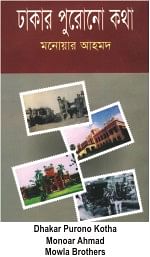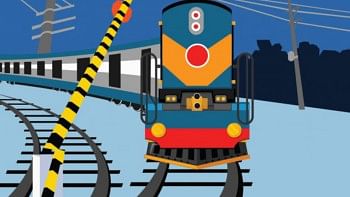Sights, sounds, a lost era

Assalamo Alaycom Beratharane Islam,
You all are aware that the Eid Mobarak procession is coming out in this Dhaka city of East Pakistan for the last 21 years due to your kind support. Therefore, this year too on the next day of Eid-ul-Fitr it will come out from Chawkbazar at 3 in the afternoon. Processions from each mahalla will join the big one at Chawkbazar. We expect that your participation will add to the grandeur of the procession.
Yours sincerely
Abdul Aziz
President
AM Nabi (secretary)
Eid Mobarak Procession Committee Dhaka
1368 Hizri
There was a time when the city dwellers of Dhaka used to get this kind of invitation on the eve of Eid to attend vibrant processions that adorned the streets of the city.
There was a time when traders from Arabia, Persia, Armenia, China, Malaya, Java and Sumatra flocked to the city to sell their exotic wares and buy local goodies, making the city a bustling trade centre even before the Mughals came.
When the Mughals ruled the city, with Lalbagh Fort buzzing with activity, most of the city's canals and surrounding rivers were vibrantly flowing and so keeping the city busy and full of life.
Factories and churches built by the Portuguese, Dutch, British and the French dotted the city's affluent areas. Purana Paltan woke up every morning to the beats of the stomping boots of soldiers. Armenians played billiard in a club at Bahadur Shah Park and Lord Northbrook held meetings with the bigwigs of Dhaka at Northbrook Hall (Lalkuthi).
Horse-drawn carriages were the only means of public transport happily availed of by city dwellers. Some preferred water routes like Dholai Khal to reach their destinations.
Rowing was arranged at Dholai Khal by the elites of Narinda. Each mahalla of the city was proudly present with its own boats. The winners rallied in the city displaying their prizes with musical instruments. And people flew kites made from dazzling pieces of paper during winter and challenged others from another mahalla. People used to fly kites at the Nawab bari field or Ramna Race Course. Big colourful processions were arranged during Jhulan Jatra and Janmashtami. Sardars led the processions.
The city's main attractions were Ruplal House, Ahsan Manzil, Mitford Hospital, Rose Garden and Curzon Hall and Buckland Bund was a place to take in the beauty of the river for the city dwellers.
Dhakar Purono Kotha talks about those days of the past.
Being a veteran photojournalist, the writer has added substance to the book with rare pictures of the old edifices of Dhaka.
The work contains a brief description of the beautifully decorated mosques, temples, residential buildings and other edifices of Dhaka in the colonial period and also when it was the capital of the Mughals.
Included in the book are pictures of many edifices, which by now have been demolished. Seeing the pictures of those beautiful edifices will make one go nostalgic about the bygone days of beauty.
There are detailed descriptions of the succulent food of Dhaka when Subarat Baburchi and Fakir Chan Baburchi ruled the taste buds of the city. People were enamoured of Paglar Gelasi, Palowaner Morog Polao and other delicacies.
The writer throws up a vivid description of the Sardar system of the city that had 133 panchayats. The panchayat was intricately linked with the lives of the people living in the mahallas. The writer provides minute details of the rules of employing a sardar and the ways of settling disputes at the panchayat. The book contains a list of 79 sardars and photographs of the prominent ones, making it an important document of history.
An added attraction of the book is the little chitchat about the first generation cinema halls of Dhaka.
The first movie, 'The Last Kiss', was made due to initiatives taken by some progressive youths of the Nawab family at a cost of Tk 12,000. The first heroine was Lolita. Due to the conservative nature of society at the time it was not possible to bring women from a respectable and educated background into cinema. So Lolita was pulled in from the brothel of Badamtoli. She was fourteen at the time. After the work on the cinema was done, she went back to her previous profession.
The book gives an account of the first talking movie Mukh O Mukhosh. Its shooting was done at Rajarbagh farmland, beside the pond of the Kamalapur Buddha Mandir, the paddy fields of Lalmatia, the woods of Mirpur and Tejgaon and Jinjira and Tongi.
One downside to the book is its use of small, black and white pictures. Using four-colour photographs would have helped readers visualise the past more vividly and would have added a new dimension to all this talk of old times.

 For all latest news, follow The Daily Star's Google News channel.
For all latest news, follow The Daily Star's Google News channel. 



Comments